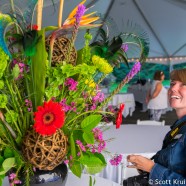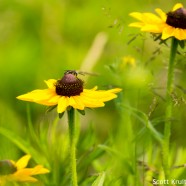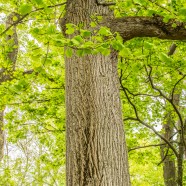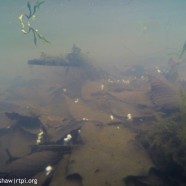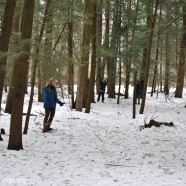Naturalists Love Flowers
We naturalists sure do love nature, including our flowers and all sorts of bright colors. I thought it was funny that RTPI Conservation Technician Elyse Henshaw and I were both standing by this arrangement before the Art and the Animal exhibition opening recently, cameras in hand, and also taking shots of the tiny flowers on some of the tables. Even during a party we are still unconsciously circulating to seeing and shooting the more natural aspects of our environment. This week I will post a new blog entry with many photos of the terrific Art and the Animal opening party featuring all of...
Read MoreBlack-eyed Susan
It is a beautiful time of the year with July’s grasses and flowers filling every field with treasures like Rudbeckia hirta, or Black-eyed Susan, delighting our insects and sustaining our world. As we embark into August make sure you schedule time to be outdoors this weekend!
Read MoreTulip Tree
Can you feel the coarse and massive folds of bark on this Tulip Tree (Liriodendron tulipifera)? The leaves are exploding in a green fire across our landscape…finally! Go outside and soak in some nature this weekend.
Read MoreUnderwater World
While these little white puffs may look like little air pockets escaping from underwater volcanoes they are actually little spermatophores, or sperm packets produced by male spotted salamanders (Ambystoma maculatum), scattered across a vernal pool floor. As females arrive and enter ephemeral pools (sometimes up to a week after the males), males go into a frenzy. Typically the ratio of males to females in the pools is very skewed, with many males to every one female. This fuels some pretty intense male to male competition and very interesting sexual selection. Males surround females and nudge...
Read MoreWe Didn’t Find Anything…And That’s a Good Thing!
After two months of intensive winter survey work, we found nothing. However, that’s precisely the result we wanted. As you’ve probably seen or heard, this past winter we surveyed several sites throughout the area looking exclusively for Hemlock Woolly Adelgid (HWA), an invasive insect that puts all Eastern Hemlock trees (Tsuga canadensis), the habitats they make up and the wildlife they support at risk. This particular pest is minute, but can bring a tree to its death within a matter of 3-5 years if left unchecked and untreated. In response to this, several organizations, state...
Read More



